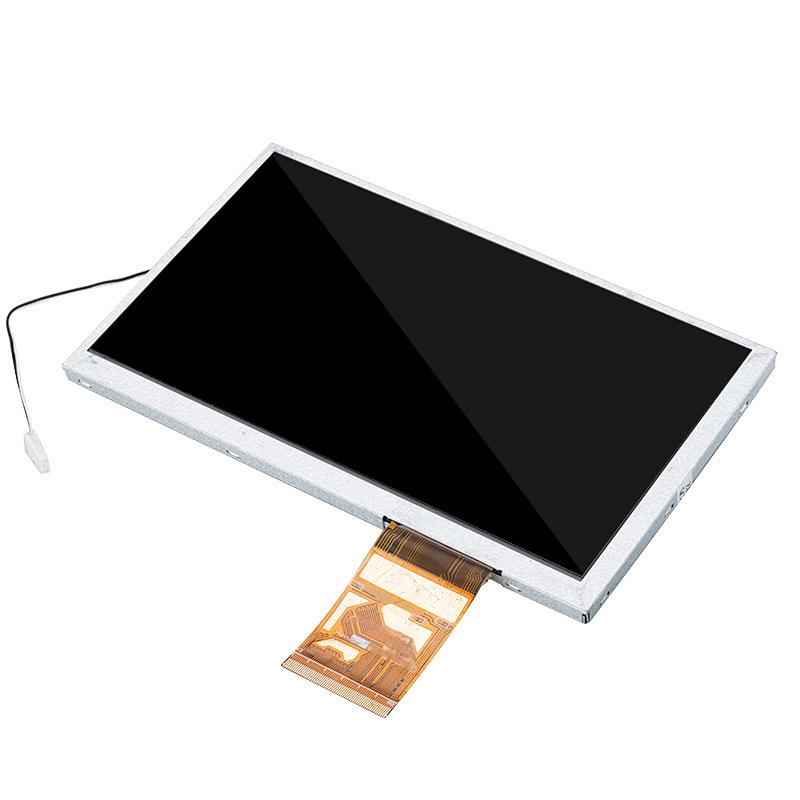Comprehensive Analysis of TFT Display Power Supply Methods: Precision Powering for Superior Display Performance
2025-07-14
As the core visual carrier of modern electronic devices, the display quality and lifespan of LCD screens heavily rely on the precision and stability of their power supply systems. This is particularly true for TFT (Thin-Film Transistor) LCD modules , which feature intricate internal structures including boost circuits, digital logic, Gamma voltage, TFT switch control, and other functional units. Different power architecture designs directly determine the module’s power consumption, compatibility, and ultimately its color and brightness performance. A deep understanding of TFT display power supply modes is crucial for optimizing product design and ensuring display quality.

To accommodate various application scenarios with different sizes and complexities, TFT displays have evolved diverse power solutions. For small-sized modules (such as portable devices or simple instrument screens), two basic modes are common: one uses a single VCC/VDD power supply (e.g., 3.3V or 2.8V) to energize internal boost and digital logic circuits, requiring all input/output signal levels to match it; the other adopts a dual-voltage design, with VCC (e.g., 3.3V) dedicated to the boost circuit and IOVCC (e.g., 1.8V) driving the interface and logic circuits—here, signal levels must strictly align with IOVCC. This flexibility allows manufacturers to efficiently customize LCD screens for specific applications, balancing power consumption and performance.

When applications shift to demanding fields like smartphone screens, where display quality and power efficiency are critical, the power supply scheme becomes more sophisticated. A typical "smartphone screen" mode employs three independent power channels: VSP/AVDD (e.g., +5.5V) powers the positive boost circuit, VSN/AVEE (e.g., -5.5V) serves the negative boost circuit, and IOVCC (e.g., 1.8V) manages the interface and logic circuits—again, signal levels must match IOVCC. This architecture ensures high contrast, wide viewing angles, and rapid response within ultra-thin spaces, showcasing the pinnacle of high-end LCD module technology.

For professional or industrial scenarios pursuing ultimate display performance, power solutions must incorporate deeper parameter control. In such designs, VCC (e.g., 3.3V) powers logic and interfaces, while critical analog voltages—such as AVDD (affecting Gamma curves and color contrast), VGH (TFT turn-on voltage), VGL (TFT turn-off voltage), and VCOM (glass common terminal, impacting display uniformity)—require independent, precise management. Experienced custom LCD display manufacturers place special emphasis on VCOM optimization, using techniques like voltage-dividing resistors and filter capacitor networks to compensate for batch variations in IPS or wide-temperature glass. They also strictly adhere to power-down protocols during sleep/shutdown to eliminate image retention risks.

From single-voltage to multi-channel precision coordination, the power supply scheme of TFT displays profoundly shapes every frame of imagery. Choosing a custom LCD display manufacturer that understands and flexibly applies these power modes ensures your product gains reliable performance—from basic display to exceptional visual experiences.
About CNK
Founded in Shenzhen in 2010, CNK Electronics (CNK in brief) expanded the world leading factory in Longyan, Fujian in 2019. It is a specialized and innovative enterprise specializing in the design, development, production and sales of display products. CNK provides customers with a full range of cost-effective small and medium-sized display modules, solutions, and services with excellent quality worldwide. Oriented in technology and high quality, CNK keeps sustainable development, works to offer customers better and stable services.



